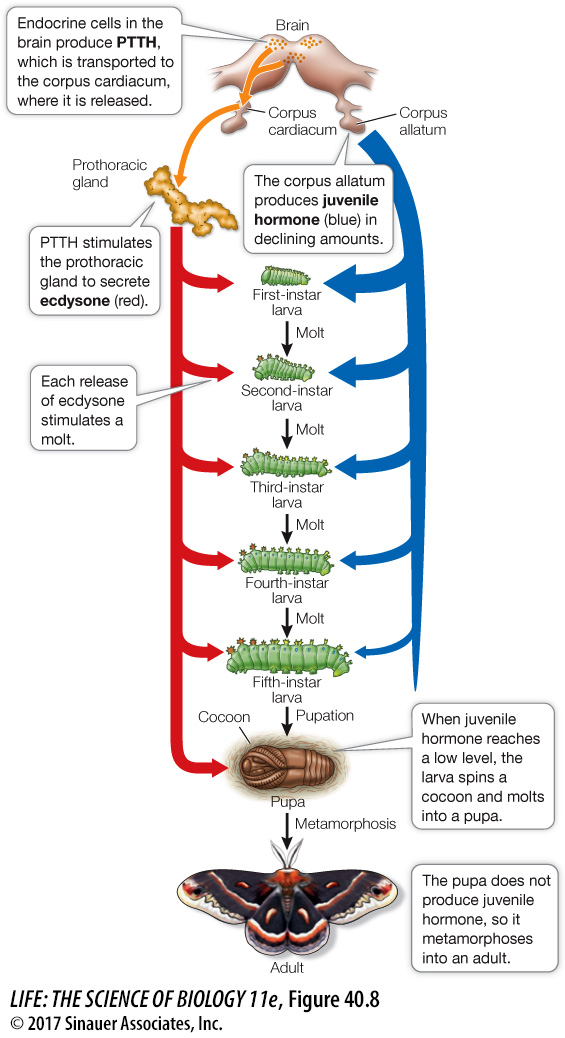Three hormones regulate molting and maturation in arthropods
An arthropod’s nervous system receives various types of information about the environment (e.g., day length, temperature, social cues, and nutrition) that help determine the optimal timing for the stages of growth and development. When conditions are right, the brain signals the prothoracic gland to produce the hormones that orchestrate physiological processes involved in development and molting.
PTTH AND ECDYSONE Two hormones, prothoracicotropic hormone (PTTH) and ecdysone, work in sequence to regulate molting in arthropods. Cells in the brain produce PTTH, which is why it has also been called “brain hormone.” PTTH is transported to and stored in paired structures called the corpora cardiaca attached to the brain (Figure 40.8). After appropriate stimulation (which for Rhodnius is a blood meal), PTTH is released and diffuses through the extracellular fluid to an endocrine gland, the prothoracic gland. PTTH stimulates the prothoracic gland to secrete the hormone ecdysone. Ecdysone diffuses to target tissues and stimulates molting.

Animation 40.2 Complete Metamorphosis
Ecdysone is a steroid hormone (see Figure 40.2B) and thus is related to the vertebrate hormones estrogen and testosterone (which also play roles in controlling growth and development). Ecdysone is lipid-
JUVENILE HORMONE What determines whether an instar molts into another juvenile form or matures into an adult? Juvenile hormone is a molecule that is released continuously from the corpora allata (structures that are attached to the corpora cardiaca, which release PTTH). As long as juvenile hormone is present, Rhodnius molts into another juvenile instar. Normally Rhodnius stops producing juvenile hormone during the fifth instar and then molts into an adult.
The role of juvenile hormone is more complex in insects that undergo complete metamorphosis. An example of complete metamorphosis is provided by the silkworm moth Hyalophora cecropia (see Figure 40.8). As long as juvenile hormone is present in high concentrations, larvae molt into larger larvae. When the level of juvenile hormone falls, larvae spin cocoons and molt into pupae. Because no juvenile hormone is produced in pupae, they molt into adults. Many modern pesticides use juvenile hormone analogs to prevent larvae developing into adults.
These cases of insect development show how just a few hormones can coordinate major developmental effects that involve very different cell types and tissues in the body. The hormonal signals reach all parts of the body simultaneously, and depending on the receptors on different cell types and the internal mechanisms driven by those receptors, the developmental processes are orchestrated.